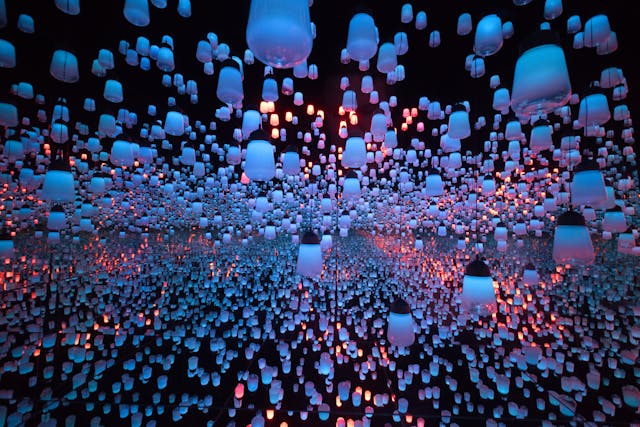
Why Decentralisation Is An Essential Step in Art Evolution
For what seems like eons, the art world has been a mystery—a place for rarity, exclusivity, appeal, and big price tags. Classically trained sculptors, graduates of prestigious schools, and an elitist connotation surround much of the traditional world.
This doesn’t work for everyone and excludes many.
You can get a lucky break or use social media for free to promote yourself. But how often does this provide the level of success many chase?
Commonly, it has been the case that artists are not noticed or collected until after their time on this planet is up and they can produce no more.
This, my friends, is a real shame and one issue in our society that we can do something about, so we chose to do something about it.
See, in a world where you can balance your books and make yourself more tax efficient at the top of a gavel or write off a chunk of income as an investment, it’s become easy for any artist (talented or not) to share their work with the world.
However, the bulk of the attention and income skew to the top 1% and the art realms are still somewhat restrictive and tricky, whereby if you don’t have a direct connection or way into this club, chances are you’re not getting in.
But Blockchain Technology has broken down borders, removed the red tape and said NO to restrictions. Decentralisation is coming, and you’re either a part of it, embracing each step, or left sitting on the sidelines.
Art is no different in this respect.
You’ve heard the stories of kids creating NFTs and selling them for ridiculous sums of crypto. Or chance collections that blew past all expectations. These have all been possible thanks to the power of decentralisation.
So what is decentralisation exactly, and why is it so important?
Let’s start at the very beginning; a perfect place to start.
An artist is inspired, puts a brush or pencil to paper, and creates a piece of art. The artist then decides to convert this drawing into an NFT, and to do so, they register the artwork on the blockchain through a process that provides a digital stamp of ownership of that artwork, thus creating an NFT – a digital asset on a blockchain representing a real-world object, in this case, the drawing. NFTs can also represent other objects such as music, games, records etc. We’ll delve into those some other day.
This NFT contains unique information about the artwork – when it was created, who created it, etc., – is permanently linked to the painting, and is registered on the blockchain, making it immutable. Meaning it’s permanent and unalterable, transparent (anyone, even your grandma, can see it), and decentralised (no central governing body owns it), among other features.
In other words, crypto art (or NFT art) is digital art cryptographically registered with a token on a blockchain. The artist digitally signs the transaction using asymmetric encryption to prove the work’s authenticity. With the NFT created, any collector, fellow artist, or fan can buy it, and the artwork can subsequently be exchanged, traded, held like any other rare artefact, or sold. When resold, the painting is traded on secondary markets, and, in many cases, each subsequent sale rewards the original artist.
Cool huh? See why artists are gaga for NFTs?
Decentralisation, lack of gatekeepers, and individual control are themes emerging from the birth of blockchain. For artists, NFTs present empowerment and a way to get and keep control of their intellectual property. Because let’s face it, we’ve all heard of artists making next-to-nothing while the big guy gets it all.
But with decentralisation, artists can finally say ENOUGH!
In this new world order, artists can manage themselves without centralised power, sell their art directly to fans and keep all the proceeds, decide if/how to split earnings with fellow creators, and more.
This ability to control one’s destiny is at the heart of the joys of decentralisation. No longer do we need gatekeepers approving or disapproving art. How often have these gatekeepers been wrong anyway – they dislike a creative piece, the artist proceeds with their gut and puts the work out to the world, and said artist receives acclaim, applause, and love?
With decentralisation, you can take your art directly to your fanbase who get to decide if they like it (or not). No longer do you need 1,000 true fans to eek a living. Now, 100 will do.
We love what art, and those who invest their time, energy, and soul into producing it to enrich the lives of others, can do for the world. These folks need more support, technologies and solutions that enable them to do more of what they are born to do.
Is the digital art world as connected as the physical art world?
This is a fascinating point and, much like art, is subjective. If you’re fortunate enough to be fully immersed in the digital art world, you’ll naturally have a different viewpoint and opinion than someone new to the industry.
Does this mean that one has a higher chance of success than the other? Yes, it does. But not due to being more immersed. Luck or fate can have a lot to do with life’s progress.
So, where to get exposure for your digital art?
To get your creations out there in the world, they must be seen first. This means showing your portfolio of work to people. And no, not just your friends and family; not to say they don’t matter, because they do.
But we’re talking about the more suited people, those immersed in the art world because unless they are an NFT or digital art enthusiast, investor or fellow creator, they most likely won’t understand, give useful feedback, or be in a position to tell you how to sell and market yourself and your art correctly.
Well then, how do you get more awareness as a digital artist?
You can begin on the web, the starting point for most businesses and ideas these days. Social media, video reach engines, vast resources and metaverse spaces exist for this purpose.
Next, get into the correct hang-out places where your ideal audience will be networking with swathes of like-minded peeps. These may be:
- Internet chat rooms or forums,
- Social media groups,
- Online communities,
- Comments on others’ feeds,
- Virtual or in-person events.
With some time and research, you’ll be able to track down the hottest spots where you can be exposed and not get told off. You can get as creative as you like with this, remembering all the while that the world values bravery, decisiveness and pluck, and that expressing yourself through art, in all its forms, has and will always be a cornerstone of society.
Can’t I just pay for exposure for my digital art?
You sure can. Many PR firms charge an arm-and-a-leg and are willing to take your money to promote your NFT. There are also lots of indie marketers promising the world for a stiff and (non) negotiable upfront fee.
You can carry out the NFT promotion yourself. Investing in getting more sets of eyes on your talents can pay dividends when pre-selling or achieving a healthy drop list of hot prospects. You could post early-stage content such as sketches, visualisations, renderings, concepts, or videos of yourself talking about art, the marketplace, your particular style, or inspirations. Leveraging others’ credibility in this regard is massively helpful. So you can find a fellow artist whose work resonates, obtain permission, and then share their work on your channels, providing a perspective about their art.
Within the online world, a ‘pay-to-play approach is a given and generally provides a helpful way to get ahead. So running some paid traffic can be massively beneficial in establishing whether you have something.
Or not. Because you could be putting your paid ads in front of the wrong audience.
There’s another approach – easy NFT promotion. Promote your NFT on a DIY NFT Promotion website like Ilunafriq, where your art is put in front of the right people more often for however long you like. Determine the time period, say ahead of an upcoming drop or to generate more bids on an existing listing on an NFT marketplace, set it, and you’re done. Everything else is taken care of, even discovery and monetisation.
Why now?
With blockchain technology comes decentralisation, resulting in one of the biggest disruptions in world operations. Art is just one of the facets affected.
Fresh talent emerges when we level the playing field and lower admission costs and boundaries for a more significant percentage of the population.
Centralised power has always dictated who was allowed to develop their talents, flourish their art, and go down in history.
But today, art is in the hands of the people. And this is a good thing.
To be part of the movement and help shape the future, simply head over to the main website and get involved from there.
See you on the inside! www.ilunafriq.com.




